#II. AUGUSTUS / one.
Photo
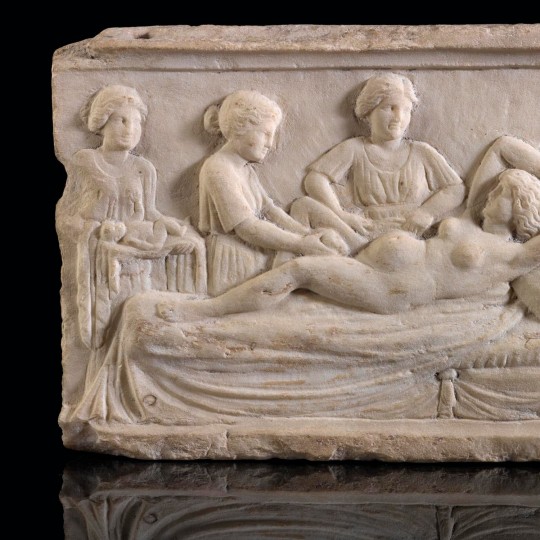
Childbirth in Ancient Rome
Childbirth in ancient Rome was considered the main purpose of marriage. Roman girls married in their early teens, and in elite society, some married before they reached puberty. The legal age for marriage was 12 for a girl; 15 was accepted as being an age fit for conception.
The ability to produce a family was also an explicit political concern in Roman society. Emperor Augustus (r. 27 BCE to 14CE) was particularly troubled by the declining birth rate, especially amongst the upper classes, when he promoted legislation, the Julian Laws in 18 BCE and the Papia-Poppaean Laws in 9 CE, which included measures to promote marriage and reward freeborn women who had more than three children.
Risks & Mortality
There were many risks involved during pregnancy both for mother and child; Pliny the Younger (61 to c. 113 CE) in his Epistulae highlights those risks when he writes of his own young wife, who did not realise that she was pregnant and failed to take certain precautions resulting in her suffering a miscarriage and being gravely ill (8.10). He also writes of the tragedy of two young sisters whom he knew, who both died giving birth (Epist. 4.21.1-3). For any pregnant young girl in labour, physical immaturity could have an adverse effect on the possibility of a normal birth; the remains of a 16-year-old pregnant female discovered in Herculaneum, buried by the eruption of Mount Vesuvius, indicates that this girl may have died anyway struggling to give birth because her immature pelvis was too narrow.
The rates of child mortality at birth or in the first five years of life were high with one in three children dying in their first year, many within the first few weeks. Fronto (95-166 CE), the tutor of Roman emperor Marcus Aurelius (r. 161-180 CE), tells of his own personal experience of having lost five children, losing each one separately, each one being born at a time when he bereaved another (1.2 Fronto, To Antoninus Augustus ii. 1-2). To counteract mortality rates, fertility rates needed to be high, a woman in antiquity on average gave birth five or six times as some of those children would not survive. Certainly, the cases of maternal and infant mortality would have varied with the socio-economic classes in Roman society; families in the lower classes had to cope with hardship and poverty, and for the newborn, the risks of infant mortality were compounded by poor diet, poor sanitation, and poor medical knowledge.
Continue reading...
122 notes
·
View notes
Text










Tamara Wiszniewska (1919-1981) - Polish actress
Tamara Wiszniewska was born on December 19, 1919 in Dubno, Poland (now a region in western Ukraine) on the banks of the Ikva River. It was here that she spent her younger years during which she picked up dancing, which eventually led her to her career in film. In her 1981 obituary in the Democrat & Chronicle, it was reported that Tamara, at age 15, “Was a ballet dancer, when German film director Paul Wegener discovered her and gave her a role in the historical film, August der Starke (August the Strong)” which premiered in 1936. This German/Polish co-production is a biographical look into the life of Augustus II, ruler of Saxony and Poland-Lithuania from 1694-1733. Although Tamara played only a small role it marked her debut and eventual rise to fame within the Polish film industry.
Following her appearance in August der Starke, Tamara appeared in thirteen other films between 1936 and 1939, including Trójka Hultajska (The Trio Hultajska, 1937), Ordynat Michorowski (Ordinate Michorowski, 1937), and Kobiety nad Przepaścią (Women Over the Precipice, 1938). Wladyslaw (Walter) Mikosz, Tamara’s future husband, produced two of these films. In an interview, Tamara and Walter’s daughter, Irene, states that, "The two met because of their film careers, and were married [late that same year] in 1937".
Life for the Mikoszs was happy for a time. Tamara continued to pursue her acting career through 1938 and 1939 and had welcomed a new born daughter into the world alongside her husband, Wladyslaw. Unfortunately, these happy times did not last long as the Mikosz family experienced the rise of Nazi Germany and their occupation of Poland in 1939 during World War II. The following excerpt from an interview with Tamara in a 1974 Times Union tells how drastically their lives were changed:
"I always played a rich spoiled girl who had lovely clothes, and for a short time I lived that kind of life too. It was a short, beautiful life that ended when the Germans took over Poland in 1939. We were wealthy and the toast of the town then. We’d go to Prague and Vienna just to see an opera or to play in the casinos. When the Germans came, my intuition told me I should have something on me to exchange. I sewed my jewelry into my clothes. Later, it bought us passes to freedom and bread so we were never hungry."
The German occupation of Poland during World War II brought then “beautiful” life of the Mikosz family to an end. Gone were their illustrious careers in film and the rewards that such a life had brought to them. In a later interview, Irene mentioned that her mother "was preparing to sign a contract for a film career in Hollywood, but Hitler’s invasion of Poland derailed the plans". Sadly, Tamara’s last appearance on the silver screen was in 1939 prior to the invasion of Hitler’s Germany; she never again starred in any films.
Although her dreams had been crushed, Tamara and her family did not lose hope. They made the best of their current situation, and were able to survive by selling the fruits of their labors that they harvested during their days in the film industry; their lives had been consumed with a fight to survive rather than a dream to thrive. However, not being ones to live quiet lives, the Mikoszs volunteered for the Polish Underground, the exiled Polish government that fought to resist German occupation of Poland during World War II. As civilians with backgrounds in film, Tamara and Walter were most likely engaged in spreading Polish nationalistic and anti-German propaganda. Such efforts of the civilian branch of the Polish Underground was in support of what Jan Kamieński refers to as "small sabotage" in his book, Hidden in the Enemy's Sight: Resisting the Third Reich from Within: "In contrast of major sabotage, the idea of small sabotage was to remind the German occupiers of an enduring Polish presence, to ensure that they felt a constant sense of unease and generally undermine their self-confidence". While attending to these duties within the Underground, the Mikosz family was separated and shipped off to separate countries: Tamara and her daughter, Irene, to Czechoslovakia (where Tamara’s parents had been sent) and Walter to Bavaria. The family was not reunited until 1945, when they were sent to the same refugee camp in Bavaria. The Mikoszs remained in the Bavarian refugee camp until the year 1950, in which they emigrated to the United States of America. Tamara and Walter lived quiet lives in Rochester, NY after arriving from a war-torn Europe, and did so until they passed away.
Although they have long since passed away from this Earth, the stories of the Polish film star, Tamara, and her film-producer husband, Wladyslaw Mikosz, will live on so long as there are people around to tell it.
#history#history crushes#submission#tamara wiszniewska#polish#actress#film history#1930s#30s#old hollywood#women in film#women in history#poland#wwii#world war 2#ww2#ww2 history#old movies#old phography#20th century
128 notes
·
View notes
Text



Easter Moralized
This Easter (which, btw, in 2024 is also International Transgender Day of Visibility) we explore the gilded pages of the Vienna Bible Moralisée (moralizing bible), of which we hold the first full-color facsimile published in 1973. The Vienna Bible Moralisée is also known as Vienna 2554, referencing its current place of residence at the Austian National Library in Vienna. One of only three 13th-century moralizing bibles still in existence, this manuscript is an excellent example of the of the ways in which Christians worked to simplify the lessons of the Bible for those that were not theological scholars. Even though they were made to be more accessible, these types of manuscripts were only created for the wealthy class; they needed to understand the Christian Bible and its lessons to ensure that they were (theoretically) promoting moral behavior. Vienna 2554 is thought to have been commissioned by Phillip II Augustus, for his son, Louis VIII or his bride, Blanche of Castile.
The Bible Moralisée is curious for two reasons: it does not actually contain the entire text of the Christian Bible, and it is mostly filled with images, rather than with words. These specific attributes contribute to the accessibility of Christian morals by abbreviating biblical stories and using illuminations to visually represent them.
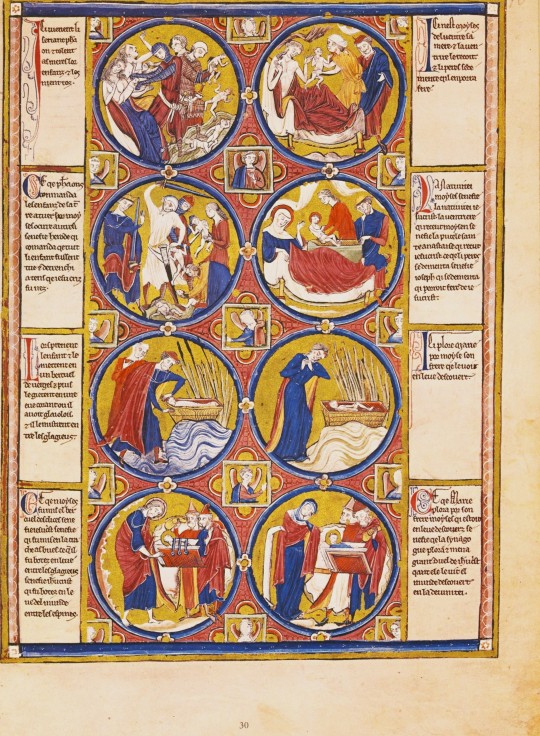
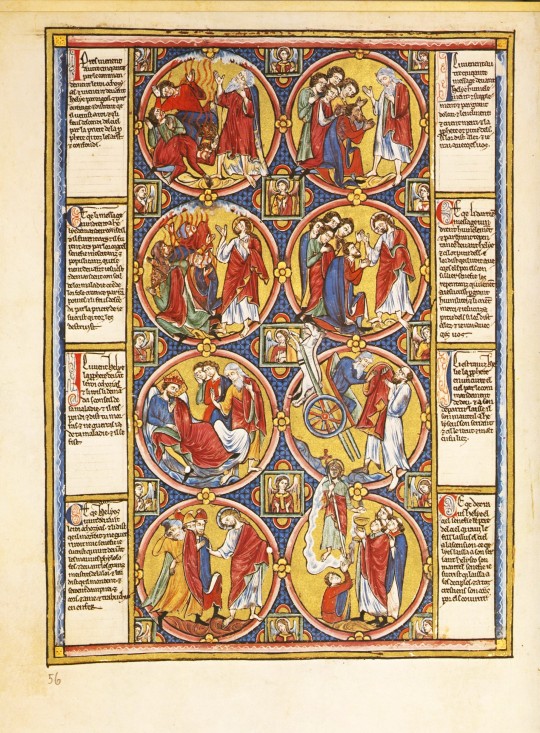
Interestingly, the designs on the pages of these bibles imitate stained glass representations at the time: the eight medallions placed in columns of four; the inclusion of quatrefoils in between these medallions; the use of vivid colors. This reflection of architectural design in the illuminations may have allowed people to visualize themselves in a church and may have led to more contemplative readings of the text that emphasized the teachings of priests and theologians at the time. One of the most well-known images in these types of bibles is Jesus as architect and creator of the universe. This type is seen on the frontispiece of this moralizing bible: Jesus is holding a compass as he focuses on the creation of the world. Geometry and astronomy were often associated with the divine in the Middle Ages and this viewpoint is well explained in Vanderbilt's Divinity Library website: "God has created the universe after geometric and harmonic principles, to seek these principles was therefore to seek and worship God."
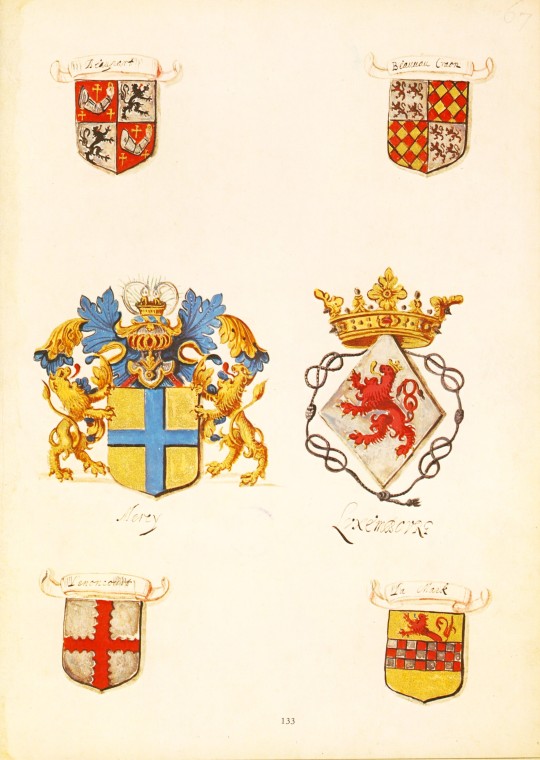
The creation of the moralizing bible also inspired later moralizing versions of books and poetry, like Ovid’s Metamorphoses. These types of moralizing volumes edited and changed parts of the works to make them conform to Christian teachings oft the time.
Our facsimile was published in 1973 by the Akademische Druck- u. Verlagsanstalt in Graz, Austria in an edition of 3,000 copies at the manuscript's original size. To see the original manuscript, you can visit the Österreichische Nationalbibliothek in Vienna or view the entirety of the manuscript online on their website here.
View more manuscript posts.
– Sarah S., Special Collections Graduate Intern
#Easter#bible moralisée#vienna bible moralisée#vienna 2554#austrian national library#Österreichische Nationalbibliothek#moralizing bible#bible#Akademische Druck- u. Verlagsanstalt#Christian bible#facsimiles#manuscripts#illuminated manuscripts#medieval manuscripts#Sarah S.#International Transgender Day of Visibility
51 notes
·
View notes
Text

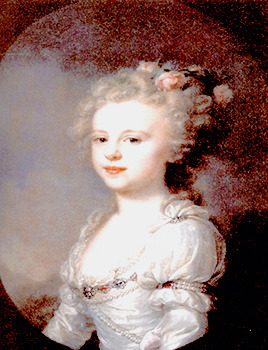


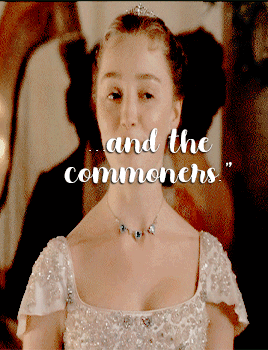
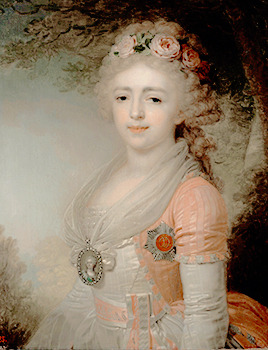
"In 1799, three years after her failed betrothal with the King of Sweden, another marital project originated for Alexandra. Previously in 1798, Dukes Ferdinand Augustus and Alexander Frederick of Württemberg who were the brothers of the Empress Maria Feodorovna, arrived in St. Petersburg to serve in the Russian army. They expressed the interest of Austria to join with Russia in a coalition against the rising power of the French Republic and Napoleon, and to cement this alliance, it was decided to arrange a marriage between Alexandra and Archduke Joseph of Austria, Palatine (Governor) of Hungary and a younger brother of Francis II, Holy Roman Emperor. Archduke Joseph personally came to Russia to see his bride. The meeting between them was successful. In mid-February 1799 the betrothal ball was held. Later, a marriage contract was signed in which Alexandra would be allowed to kept her Russian Orthodox faith. In October, Count Fyodor Rostopchin wrote:
"Believe me, that's not good started to strengthen the alliance with the Austrian court by ties of blood... Of all the sisters she will be given the least successful marriage. She will have nothing to wait for, and her children even more so."
On 25 September 1799, a decree was published about the royal title of Alexandra. In Russia, she was referred to as "Her Imperial Highness Grand Duchess the Archduchess of Austria" with the French prefix of "Palatine d'Hongrie". The wedding took place on 30 October 1799 at Gatchina Palace, one week after the wedding of her sister Elena. To celebrate both events, poet Gavrila Derzhavin wrote the ode "the wedding celebrations of 1799". On 21 November the couple went to Austria. Countess Varvara Golovina remembered that Alexandra was sad to leave Russia, and her father Emperor Paul I "constantly repeated, would not see her since her sacrifice." According to Alexandra's confessor, Andrei Samborski, Alexandra was given a cold reception in Vienna. However, other sources offer a different view. Queen Maria Carolina of Naples (the Emperor's mother-in-law) and her daughters arrived in Vienna in August 1800 for a long stay. Maria Carolina's daughter, Princess Maria Amalia of Naples, wrote in her journal that on 15 August the Queen and her daughters were introduced to Alexandra, whom she described as "very beautiful". Maria Amalia and Alexandra became friends during this time; and the Princess of Naples wrote in her journal that the Russian Grand Duchess and her husband had a friendly relationship with the rest of the imperial family and took part in the family gatherings, parties and balls in Vienna, which contrasts with the version given by Andrei Samborski. For instance, in January 1801, Maria Amalia wrote in her journal that the imperial family used to attend balls in Archduke Joseph's residence in Vienna, where "beautiful Alexandra, always serious and sad, has a magnificent household." When she was presented to Emperor Francis II, she reminded him of his first wife Elisabeth of Württemberg, who was her maternal aunt; this caused the jealousy of Empress Maria Theresa, Francis II's second wife, who also was envious of Alexandra's beauty and fine jewelry. Imperial confessor Andrew Samborski wrote:
"Remembering the happy cohabitation with her led him (the Emperor) in extreme confusion of mind which afflicted the heart of the Empress, his present wife. After this, she became in the innocent victim of the Empress' implacable vengeance...The Empress not forgotten and humiliated her parents and siblings when she called them a family of freaks, due to the treatment that Grand Duke Constantine gave to his wife."
Once, Alexandra turned up to a ball beautifully dressed, with magnificent jewellery. The Empress was incensed at being upstaged by the Archduchess, and ordered her to remove her jewellery, and also told her that she could no longer wear them. Heeding her instructions, Alexandra only decorated her hair with flowers when she attended a play some time later. The flowers highlighted her beauty, leading her to be applauded and being given a standing ovation, making Maria Theresa even more furious. Archduke Joseph could not protect his wife from these attacks. Furthermore, her Eastern Orthodox faith aroused the hostility of the Roman Catholic Austrian court, who urged her to convert. Pavlovna was popular among Hungarians, both the nobles and the commoners. According to the legend, it was her suggestion to add the color green as the third color to the flag of Hungary. Hungarians had been using red and silver, then red and green as their national colors for centuries at the time. However, in the late 18th century, a third color was proposed to be added to the flag, to follow the style of the French tricolor. Pavlovna suggested green as a symbol for hope. By the mid-19th century, the red-white-green Hungarian tricolor became widespread.
Wikipedia of Grand Duchess Alexandra Pavlovna.
81 notes
·
View notes
Text
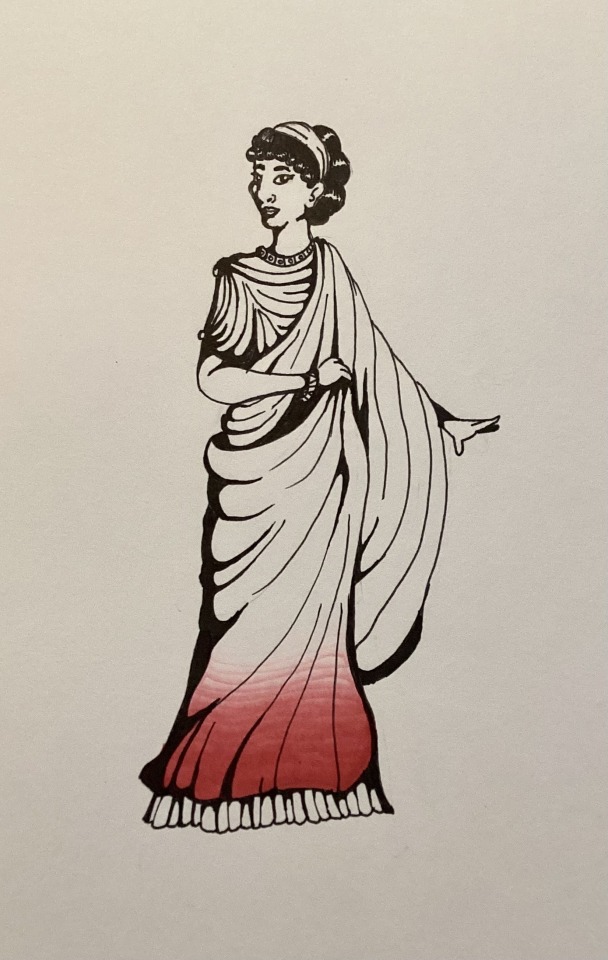
Day 7: Cleopatra Selene!
Cleopatra Selene and her brother, Alexander Helios, were born to Cleopatra VII and Marc Antony in 40 BC; the twins were named for the moon and sun. As her parents formed their Mediterranean empire, they named six-year-old Cleopatra Selene Queen of Cyrenaica and Libya - but those plans crumbled to dust with the defeat and suicides of her parents. She and her young brothers were paraded in triumph through Rome as war prizes by Caesar Augustus, who then had them raised in the household of his sister (and Marc Antony’s former wife) Octavia.
The fate of her brothers is one of the great mysteries of the era; they simply disappeared from history. Cleopatra Selene, however, did not. She married Juba II of Numidia, a vassal king of Rome, who after Numidia’s direct annexation was granted the neighboring North African kingdom of Mauretania. The marriage was a success, and the couple essentially acted as co-rulers. Together, they created new infrastructure, expanded trade routes, and promoted the arts.
Cleopatra Selene also brought old allies and advisors of her mother’s to her new court at Caesaros, in modern-day Algeria. She promoted Egyptian influence in architecture and religion, including a version of the famous Pharos lighthouse, and firmly defended Cleopatra VII’s legacy. Defiantly, she named her son Ptolemy.
The date of her death is uncertain, with proposed dates ranging from 5 BC to 17 AD. Augustus’ court poet, Crinagoras of Mytilene, composed a poetic epigraph in which the moon goddess herself veils her face in mourning at the Queen of Mauretania’s passing.
#cleopatra selene#roman history#egyptian history#ptolemaic dynasty#awesome ladies of history#october 2023#my art#pen and ink#suicide mention tw
73 notes
·
View notes
Note
I read through all your posts about Alysanne Targaryen as Maegor's daughter and am now in a rabbit hole. Thank you. I've been thinking about Maegor's wives and which one of Henry VIII's wives they represent. Ceryse is Cathrine of Aragon and Alys is Anne Boleyn. The others are hard to pin for me since there isn't a lot. What do you think? Would Maegor's reign have been more interesting if his marriages had more similarities to those of Henry VIII?
I think this is where we run into a number of problems regarding the way GRRM wrote Fire & Blood specifically and the way he setup Westeros more generally.
For one, the fairly homogenized nature of southron culture as well as the oversimplification of religious institutions and history means you can't quite get the same dynamism as from real life European history, with its dizzying array of languages, cultures, cuisines, fashions, etc., to mention nothing of the then-ongoing Protestant Reformation. I suppose GRRM could have had Maegor convert to the Old Gods a la Julian (II) the Apostate or the Drowned God (you just know the Ironborn are the one race on the surface of Planetos that would say King Maegor the Good with a completely straight face) or even R'hllor, which would be the best choice in terms of worldbuilding opportunities in my opinion.
Moving on, we run into a handful of problems with Maegor specifically, one of them being the length of his reign. Look, while I can't deny Maegor ruling for 6 years and 66 days is incredibly cheeky, it also isn't anywhere close to Henry VIII's 36 years as king. With so little room timeline-wise, there isn't a lot of flexibility when it comes to telling new stories and fleshing out preexisting ones and all that is before you factor in Maegor himself.
I won't hold back. For all GRRM's talk of moral ambiguity, the human heart in conflict with itself, good men who were bad kings and bad men who were good kings, etc., his Targaryen monarchs are, for the most part, numbingly one-note. Aegon I is a literal enigma, Aenys is weak, Maegor cruel, Viserys I a party animal, Aegon II and Rhaenyra mirror-images of each other in their disqualifying vices, etc. As I've written before with my post reimagining Maegor as more of a Ivan (IV) the Terrible figure there was room to make him a genuinely controversial figure of historiography but instead GRRM doubled down on sensationalism and apathy-inducing slasher porn for lack of a better word. The fact Maegor is also the first and last of Visenya's line just adds more salt to the wound but that's part of GRRM's more general (and for me personally, vexing) habit of keeping family trees incredibly small.
(I do recall another alternative someone once brought up to the late Steven Attewell. Namely, turning Maegor into the Westerosi version of Macbeth by way of Der Untergang.)
This brings me to my semifinal point. GRRM didn't have to write Fire & Blood as Procopius' Secret History on steroids with a dash of Suetonius' Lives of Twelve Caesars and I, Claudius (the entire Saera episode is practically lifted wholesale from the scandal that envelops Augustus' daughter, Julia) but he did, which is doubly disappointing because not only does the final product suck quality-wise as a result but also because there were so many other avenues available to him.
He could have written Fire & Blood as a proper history (with less focus on the sex lives of teenage girls for one) or as a mirror for princes or as a dialogue between two characters or even as a character study. You can even see GRRM struggling with the constraints imposed by his use of Gyldayn in certain sections like the death of Maelor and the entire Hour of the Wolf episode, where you get reams of dialogue and characterization as well as more traditional narrative trappings like build-up, mood setting, etc.
Now, to answer your actual question (lol), I don't think any of Henry VIII's other wives map well onto Maegor's. Tyanna is, more or less, his female counterpart in terms of cruelty and zero redeeming features and entirely a fantasy construct. Elinor and Jeyne are both married to Maegor for only a year (with poor Jeyne dying in childbirth because Jeyne Westerlings, like the Brackens, Peakes, and Florents, cannot catch a break in Westeros) and before said marriage takes place neither appears on the page. As for Rhaena, well, credit where its due, she was a rare (and unexpected) highlight of Fire & Blood.
Thanks for the question, anon
#maegor the cruel#house targaryen#asoiaf criticism#asoiaf meta#valyrianscrolls#asoiaf#asoiaf themes#maegor targaryen#fire and blood#volume 1
20 notes
·
View notes
Text
Young Royals Names Meanings
So I am watching a show in portugese now and I heard the word that sounded like "Felice" but it wasn't used as a name. So it coused me to look for meanings of characters names in Young Royals (bc II haven't been over it since I watched it for the first time last year). So here's the post with some interesting facts about names of our (more or less) loved people :O
W I L H E L M

From german language Wilhelm literally means "resolute protector". German “willio” means will/desire and “helm” means protection/helmet.
S I M O N

Simon is a name of Hebrew and Greek origins. It means “to hear, be heard” and “reputation.” This Biblical name belonged to one of the 12 Apostles in Christianity known as Simon Peter.
S A R A

In Hebrew Sara means "princess" or "noblewoman". It is a variation of Sarah, the name given to Abraham's wife in the Bible - forefather of Jews.
A U G U S T

August is a name of Latin origin. It means “to increase” and “great”. Coming from the name Augustus that means “exalted” and “venerable”. It was first associated with the Roman emperor Augustus Octavian.
F E L I C E

Felice is a gender-neutral name most commonly used in Italy. An alternative form of the Roman name Felix. It means "lucky," "happy", "fortunate," or "successful" in Latin translations.
E R I K

Erik is a name of Standinavian origin. It means "always ruler" or "eternal ruler" or "sole ruler".
Interesting, right? Thank you for listening to my ted talk
#young royals#crown prince wilhelm#simon eriksson#sara eriksson#felice ehrencrona#erik young royals#name meanings#i had to#wilmon#i think im genius tough
74 notes
·
View notes
Note
Hello my love, can I ask what you are working on right now?
Of course, anon. My other wip lists are all update, but I added a few more things to this one.
Yandere Ramsay Snow/Bolton Headcanons (General) (Game of Thrones)
Yandere House Targaryen Headcanons (Aerys II, Rhaella, Rhaegar, Viserys and Daenerys) (Platonic) (Game of Thrones)
Yandere Daenerys Targaryen Headcanons (General) (Game of Thrones)
Yandere Jon Snow/Aegon Targaryen Headcanons (General) (Game of Thrones)
Yandere Khal Drogo/Daenerys Targaryen Headcanons (Poly!Romantic) (Game of Thrones)
Yandere Jon Snow/Daenerys Targaryen Headcanons (Poly!Romantic) (Game of Thrones)
Yandere Robb Stark Headcanons (General) (Game of Thrones)
Yandere Viserys/Daenerys Targaryen Headcanons (Poly!Romantic) (Game of Thrones)
Yandere Tywin Lannister Headcanons (Platonic) (Game of Thrones)
Yandere House Lannister Headcanons (Platonic) (Game of Thrones)
Yandere Aegon the Conqueror Headcanons (A Song of Ice and Fire)
Yandere Maegor the Cruel Headcanons (A Song of Ice and Fire)
Yandere Daerier Family (Platonic) (Arkyos Angel)
Yandere Julian Daerier Headcanons (General) (Arkyos Angel)
Yandere Ian Daerier Headcanons (General) (Arkyos Angel)
Yandere Tamlin Headcanons (General) (A Court of Thorns and Roses)
Yandere Rhysand Headcanons (General) (A Court of Thorns and Roses)
Yandere Lucien Vanserra Headcanons (General) (A Court of Thorns and Roses)
Yandere Azriel Headcanons (General) (A Court of Thorns and Roses)
Yandere Cassian Headcanons (General) (A Court of Thorns and Roses)
Yandere Inner Circle Headcanons (Platonic) (A Court of Thorns and Roses) (POSTED)
Yandere Bat Boys/Rhysand, Azriel and Cassian Headcanons (Poly!Romantic) (A Court of Thorns and Roses)
Yandere Apollo w/Hera's Child Headcanons (Romantic) (Greek Mythology)
Yandere Endless Family Headcanons (Platonic) (Sandman)
Yandere BTS Boyfrind Headcanons (Romantic) (BTS)
Yandere BLACKPINK Reactions (BLACKPINK)
Yandere Apollo/Ares Headcanons (Poly!Romantic) (Greek Mythology)
Yandere Caesar Augustus/Octavian Headcanons (General) (Historical Characters)
Yandere House Stark Headcanons (Platonic) (Game of Thrones)
Yandere Diana Prince/Wonder Woman Headcanons (Platonic) (DC)
Yandere Golden Trio Headcanons (Platonic) (Harry Potter)
Yandere Barry Allen Headcanons (General) (The Flash/DC)
Yandere Hermes/Apollo Headcanons (Poly!Romantic) (Greek Mythology)
Yandere Stefan Salvatore Headcanons (Romantic/NSFW) (The Vampire Diaries)
Yandere Damon/Stefan Salvatore Headcanons (Poly!Romantic) (The Vampire Diaries)
Yandere Mikaelson Family Headcanons (Platonic) (The Originals)
Yandere Prince Charming (Kit) Headcanons (General) (Cinderella/Disney)
Yandere Dimitri Headcanons (General) (Anastasia/Disney)
I've added all of these but that doesn't mean that I'm working on all of them at the same time, rather that they are the main ones that I'm going to write. This can be changed depending on the case, but for now these and others are mentioned in other wip lists.
If your order didn't appear on one of my lists, don't be sad! I will write all of them in due time! :)
~ Lady L
#wip#yandere game of thrones#yandere arkyos angel#yandere a court of thorns and roses#yandere greek mythology#yandere sandman#yandere the sandman#yandere bts#yandere blackpink#yandere historical characters#yandere dc#yandere harry potter#yandere the flash#yandere the vampire diaries#yandere tvd#yandere the originals#yandere to#yandere acotar#yandere disney#yandere asoiaf#yandere a song of ice and fire#asoiaf
89 notes
·
View notes
Note
Oooh tell me more about East Asians in Roman Italy.
So! Archaeologists have found at least one skeleton with East Asian ancestry in a Roman cemetery in Vagnari, Italy! That one's been confirmed by DNA testing. They might have also found a couple East Asian folks in a Roman cemetery in Londinium, England, but that's just their best guess based on bone morphology, and they would need DNA to confirm those, too. Either way, it's very likely that there were more people of East Asian descent in the Roman empire, whose remains we simply haven't found.
We have one written account of travelers from "Serica" visiting during the reign of Augustus (Florus, Epitome, II, 34). Serica is explicitly the homeland of silk, and thus usually taken to mean China. The Romans were quite fuzzy on the geography, though, so in this instance the visitors might have been Tocharians, Saka, or another Central Asian people.
The Romans managed to reach China, too, and the Chinese called Rome "Daqin." A delegation sent by either Antoninus Pius or Marcus Aurelius arrived at the court of Emperor Huan in 166 CE, and another one from Emperor Carus in 284 CE. There are also a few stories of Roman traders and entertainers.
#i want to see a movie set in ancient rome that reflects how diverse it actually was#people traveled so much! we've found algerians and syrians in roman britain and germans in roman egypt!#it's so cool!#just roman asks#ancient rome#roman diversity#things to whack racists with
49 notes
·
View notes
Photo

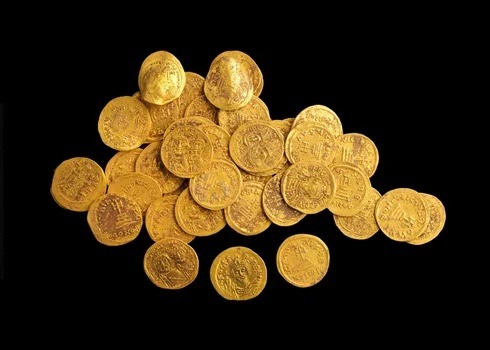







An Ancient Hoard of 44 Byzantine Gold Coins Discovered in Israel
A hidden cache of 44 gold coins dating from the Muslim conquest of Jerusalem was recently found during an archaeological excavation at the site of the ancient city of Banias, the Israel Antiquities Authority (IAA) revealed on Monday.
Several of the coins were dated to the reigns of Emperor Phocas (602–610) and Emperor Heraclius (610-641), the latter of which overlapped with the Muslim conquest of Byzantine Palestine in 635.
“The coin hoard, weighing about 170 grams … reflects a specific moment in time, when we can imagine the owner concealing his fortune in the threat of war, hoping to return one day to retrieve his property. In retrospect, we know that he was less fortunate,” said Yoav Lerer, who directed the excavation on behalf of the IAA.
Banias, which is located within the Hermon River nature reserve, was first established by Canaanites and reached its peak in the Early Roman period, when Herod the Great and his son Philip II entirely rebuilt the city and named it Caesarea Philippi, in honor of Roman Emperor Augustus.
According to Christian tradition, Banias is where Peter the Apostle recognized Jesus as the messiah and thereafter received the keys to the kingdom of heaven, as recounted in Matthew 16:18.
Eli Escusido, director of the Israel Antiquities Authority, said of the discovery: “The coin hoard is an extremely significant archaeological find as it dates to an important transitional period in the history of the city of Banias and the entire region of the Levant. The Israel Antiquities Authority, together with the National Parks Authority, will work together to exhibit the treasure to the public.
#A Ancient Hoard of 44 Byzantine Gold Coins Discovered in Israel#coins#collectable coins#gold coins#ancient coins#ancient artifacts#archeology#archeolgst#history#history news#ancient history#ancient culture#ancient civilizations#emperor phocas#emperor heraclius#emperor augustus#banias
218 notes
·
View notes
Text
Gustholomule HC’s Part II
• Matt goes to bed at ungodly hours on school breaks. He could easily sleep for over 12 hours. Gus sometimes wonders if he’s alive or not until he finally gets a good morning text around 5pm.
• Gus however has a bedtime he needs to stick to, not because he has to, but because if his sleep schedule/routine is broken, he will be SO crabby the whole day.
• however, Gus has spent late hours into the night giggling and kicking his feet talking to Matt over penstagram for hours, this was when he first started crushing on Matt. Matt no longer expects Gus to stay up late for him, he will do many things, but he will not face Augustus Porter’s wrath for sleeping an hour late.
• alright, I have seen SO many takes about this one and it may be controversial but. Gus is gay and Matt is pan.
• stolen with permission from @sapphic--kiwi but Gus did used to identify as bi, back when he was a young baby gay and still figuring out his identity, but as he got older, he realized he didn’t like girls at all! He’s a man kisser yuck /aff
• Matt, however, has had many crushes, on many different witches and demons (and even a robot) but Gus was the first crush he’d ever felt so strongly for. It was more than just a crush. Matt Tholomule was in soul wrenching, disgustingly utter Like™️ with Gus. He’s the first person Matt’s ever liked that he looked at and wanted so badly. He’s disgusted ofc but damn if he didn’t want to hold stupid Gus’s hand and kiss his dumb face—
• Matt has a snake palisman, named Gremlin (hc by me and design courtesy of @sapphic--kiwi ) but he has a fear of flying. It gives him motion sickness. Especially the way Gus flies on Emmiline Bailey Marcostimo. Still, he flies sometimes if he’s running late to school and Steve can’t take him in the motorcycle.
• Gus and Matt LOVE supporting each other in their respective sports. There’s no way in hell Gus would ever miss one of Matt’s grudgby matches, and the reverse is true too: Matt goes to all of Gus’s flyer derby games. They are so so supportive of their S/O and they both turn into complete idiots when they see each other in uniform.
• when they do eventually get married (when they’re much older ofc) they take the name “Tholomule-Porter” :))
• Gus is so particular about being clean but he’s also a hoarder. They have so many random human artifacts in their house, but the moment Matt tracks mud in the house— all hell breaks loose.
• I can also see Gus as an upper-level Illusions professor at Hexside one day and Matt being an architect (again, thank you @sapphic--kiwi for helping refine this one) who sometimes has to work in the field and get his hands dirty to make sure his vision is properly executed.
#gustholomule#gus porter#matt tholomule#mattholomule#toh hcs#gustholoser#the owl house#toh spoilers#toh
129 notes
·
View notes
Text

ALKEN, Samuel Henry (1810-1894) and George Augustus SALA (1828-1895)
The funeral procession of Arthur, Duke of Wellington. London: Ackermann & Co., 1852.
An elaborate panoramic view of the entire funeral procession. At 20 metres (67 feet) in length when unfolded, this is one of the longest panoramas ever made. Wellington died on the 14 September 1852 aged 83. He had served as commander of the British forces and their allies in the Peninsular War and at the Battle of Waterloo, and served twice as Prime Minister. Wellington was one of few non-royals to be afforded a state funeral, and his enormous funeral carriage, was said to have weighed 12 tons and made of brass from French cannons captured at Waterloo. The funeral held on 18 November at St Paul’s Cathedral was one of the grandest of any in Britain in the 19th century. Abbey Life 597; Bobins II, 342.
Christie’s
8 notes
·
View notes
Note
what are your most favorite caesar facts :-) (<- for brain distraction)
POV you asked an overexcited little boy to show you his favorite hot wheels
Despite the common English pronunciation, Caesar would have said his name something like "kai-oos you-lee-us kay-zhar". This pronunciation is the origin of the king's titles kaiser (German/Prussian) and czar/tsar (Russian)
On that note, his famous quote "veni, vidi, vici" would have been said "whey-nee wee-dee whee-key" which is less cool for gym bros to get tattooed. And while he probably didn't have any "last words" besides an exclamation of initial shock, the other most likely is the Greek "kai su teknon", meaning "you too, child", directed at Brutus. This is often assumed to be an expression of hurt and betrayal, but the wording is actually the same as known curse tablets and was probably more along the lines of a snide "and the same to you, boy"
He shaved his dick and balls and it made Cicero really mad
Had his co-consul thrown in animal manure in front of a crowd he'd gathered to watch. Later he had the guy jumped which scared him so much that he didn't leave his house for the rest of their term. This led to the common saying at the time that Rome was "under the consulship of Julius and Caesar"
His number one political rival Cato accused him of being part of a conspiracy when he got a letter covertly delivered to him in a senate meeting, but it was read aloud and was actually an ancient sext from Brutus' mom
He was probably part of the conspiracy too tbh but no one can for sure prove it
Helped his friend Clodius (noted crossdresser for pussy) get adopted by a guy younger than him to run a political scam
People called him the Queen of Bithynia because everyone liked to say he fucked Mithridates II of Bosporus, and he was often called "every woman's man and every man's woman". The poet Catiline also wrote a little ditty about how Caesar is a flaming gay who takes it up the ass
Not really a fun fact, but Caesar managed to kill off 1/3 of the Gallic population (about a million people) in eight years, putting him only a couple spots below the top ten most prolific killers in history
Caesar did not conquer Britain. They kicked his ass all the way back to Rome
Despite his reputation as the first emperor, Caesar never held the title of princeps. The first emperor was his adopted son and successor, Augustus. The only non-standard military titles he ever held were consul and dictator (not the current meaning of the term).
If you're interested in knowing what Caesar looked like, the Tusculum Portrait is the only image of him that can be confidently dated to his lifetime and was probably sculpted from life as well. Don't believe the later George Clooney looking busts
#men on tiktok don't even come close to thinking about the roman empire as much as i go#rookie numbers#answered#flora.txt
21 notes
·
View notes
Text
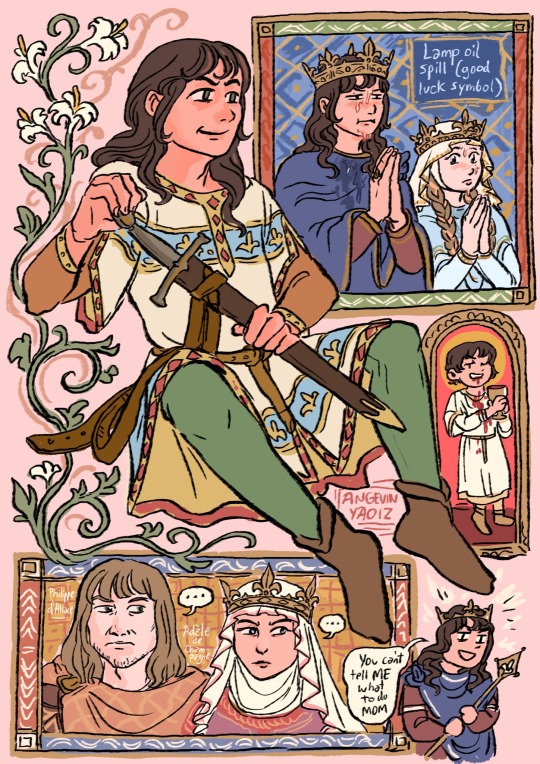
1180 era Philip Augustus
Grew out his hair for the coronation, wedding to Isabella of Hainault, seizing the dowager Queen Adele’s lands and feuding with his former guardian-turned-uncle-in-law Philip Of Alsace, the Count of Flanders. At this time, the Plantagenets supported the young Philip against his rivals (also tangentially the count of Flanders was half an Angevin, which is curious)
Wanted to do a design inspired by the long hair style that Louis VII and and Philip II seem to be sporting on their royal seals. Wondering if it was common style at that time or just kind of the visual convention. Merovingian throwback swag maybe? also it's just fun to draw.
Bonus tiny Philip inspired by that one vision Louis had about his boy drinking the blood of the Vassals, very normal indeed
#Philip augustus#historical art#12th century#medieval#medieval era#philippe auguste#Adela of Champagne#Philip Count of Flanders#Philippe d'Alsace#Isabella of Hainault#philip ii of france#my art#illustration
24 notes
·
View notes
Text
With how the Romans are and how their hatred for anything unroman like.
Anything that doesn't fit their ideals.
I wonder if Jason ever got shit for not only having a Greek name but being named after a Greek hero.
Especially by Octavian.
Because that's something his namesake, Gaius Julius Caeser Octavianous aka Emperor Augustus did to get the Romans to turn on Mark Anthony.
Octavian presented himself as the most Roman to ever Rome in Rome.
Modelling himself as Caeser's successor and using Mark Anthony's relationship with Cleopatra to show he's been seduced by the Greeks.
That Mark Anthony had turned on Rome and was as such an enemy of Rome itself.
Jason being named after a Greek hero and showing up to Camp in the Argo II.
His namesake being the one on the original Argo.
... Yeah I can see the cogs turning in Octavian's head to turn this around.
And that's before the Eidilon possessed Leo, burned camp and Jason stayed at his side.
Wouldn't be the first time someone baring the name of a Roman emperor turned on Jason.
26 notes
·
View notes
Text


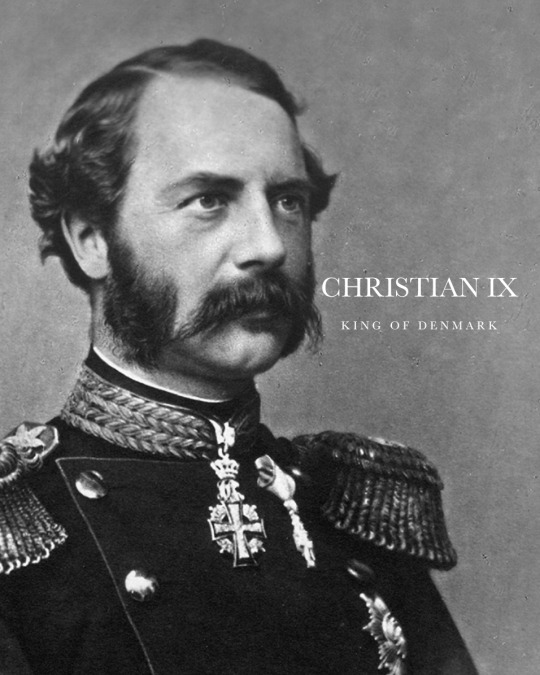


GODPARENTS OF GRAND DUCHESS XENIA ALEXANDROVNA
Grand Duchess Xenia Alexandrovna of Russia was born during the reign of her grandfather Emperor Alexander II on 6 April 1875 at the Anichkov Palace, Saint Petersburg. She was the elder daughter of the Tsesarevich (later Alexander III) and his wife, Tsesarevna Maria Feodorovna of Russia (later Empress consort). She was christened 29 April in Saint Petersburg, with her godparents listed below:
PRINCESS MARIE OF HESSE AND BY RHINE, EMPRESS MARIA ALEXANDROVNA OF RUSSIA - her paternal grandmother, the consort of Emperor Alexander II, was one of her godparents. Known for her intellect, she was one of the founders of the Russian Red Cross Society. However, she suffered from tuberculosis from 1863 and spent long stays in southern Europe to avoid harsh winters. Maria passed away from illness when Xenia was still a child.
KING CHRISTIAN IX OF DENMARK - her maternal grandfather, the Danish King was one of her godparents. His initial unpopularity at the start of his reign, and the many years of political strife, where the king was in conflict with large parts of the population, his popularity recovered towards the end of his reign, and he became a national icon due to the length of his reign.
GRAND DUKE VLADIMIR ALEXANDROVICH - her formidable uncle was another of her godparents. He followed a military career and occupied important military positions during the reigns of the last three Russian Emperors, including her father Alexander III and brother Nicholas II.
PRINCESS THYRA OF DENMARK, CROWN PRINCESS OF HANOVER AND DUCHESS OF CUMEBRLAND - her maternal aunt and look-alike, was among the grand duchess' godparents. The youngest daughter and fifth child of Christian IX of Denmark. In 1878, she married Ernest Augustus, the exiled heir to the Kingdom of Hanover. As the Kingdom of Hanover had been annexed by Prussia in 1866, she spent most of her life in exile with her husband in Austria.
Source
22 notes
·
View notes